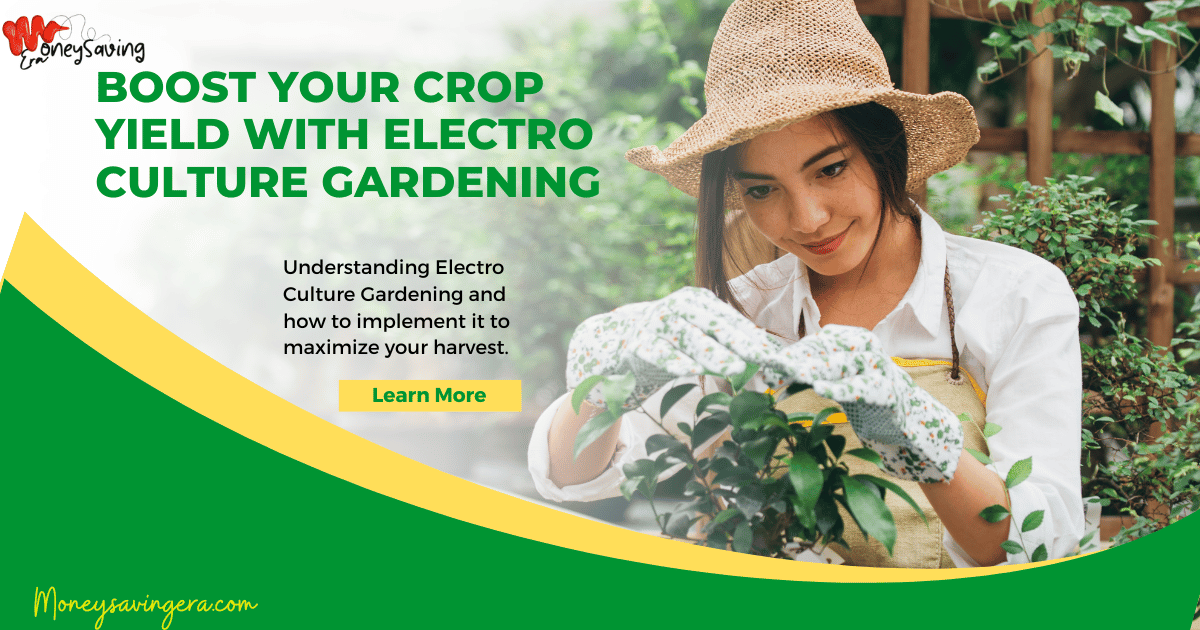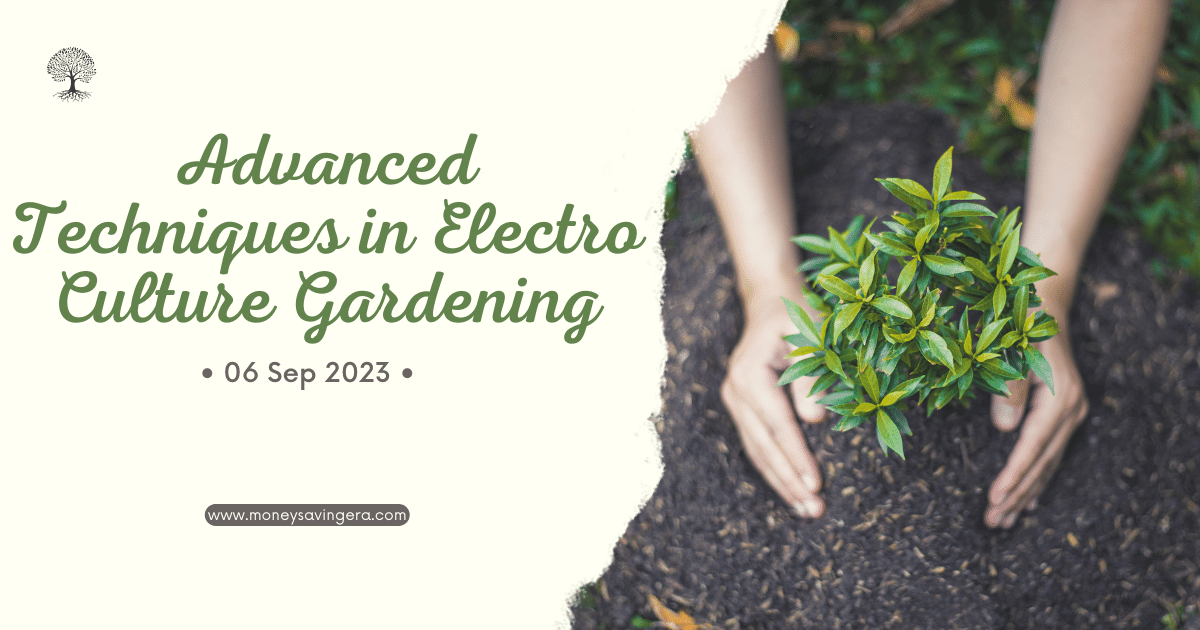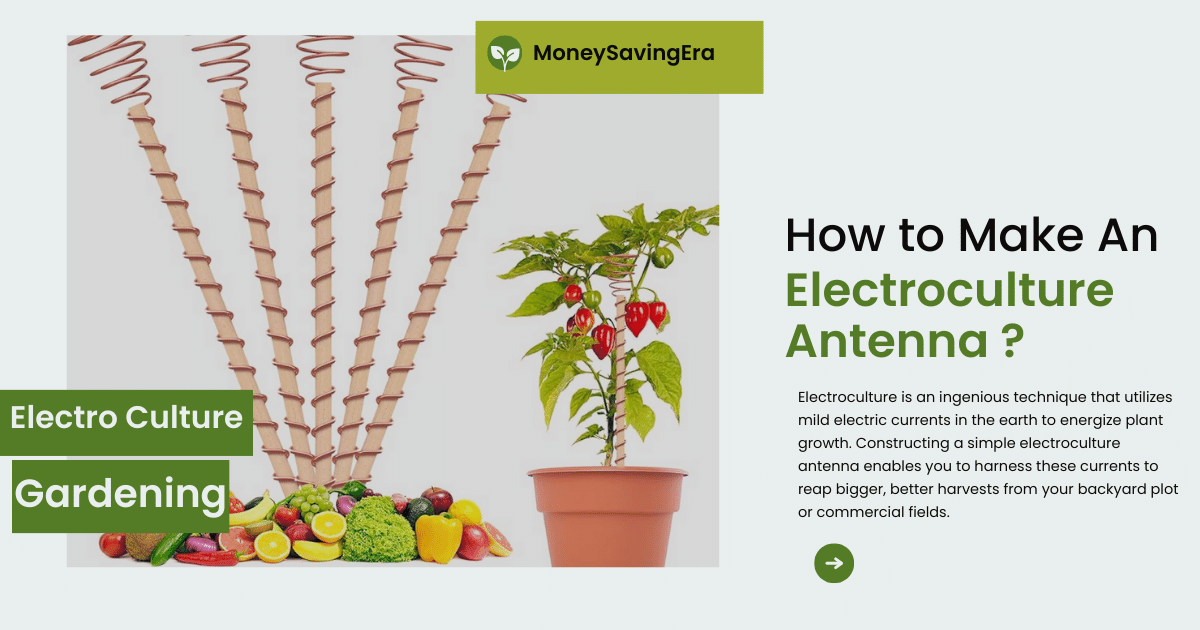Electro-culture gardening, also known as Electro-Horticulture, is a modern approach to gardening that utilizes low-level electrical currents to enhance plant growth and increase yields. In contrast, traditional gardening methods encompass various techniques such as soil-based gardening, hydroponic gardening, and organic gardening.
A comparative study between electroculture gardening and traditional methods can provide valuable insights into their differences and benefits. Understanding how electroculture gardening works, its advantages and drawbacks, and how it compares to traditional gardening methods can help gardeners make informed decisions about their gardening practices.
This article aims to explore the intricacies of electroculture gardening and traditional gardening methods and analyze their respective merits and limitations.
Key takeaway:
- Electro Culture Gardening maximizes plant growth: Electro Culture Gardening utilizes electric currents to enhance plant growth and yield, allowing for more productive gardening in limited spaces.
- Traditional gardening methods provide a range of options: Soil-based, hydroponic, and organic gardening methods offer different approaches for cultivating plants according to individual preferences and resources.
- Electro Culture Gardening offers environmentally-friendly benefits: By reducing water and nutrient requirements, Electro gardening minimizes environmental impact and promotes sustainable gardening practices.
What is Electro Culture Gardening?
Electro Culture Gardening, also known as Electro-horticulture, is a modern technique that harnesses the power of electricity to naturally enhance plant growth and increase productivity. It involves the application of a low-level electrical current to the soil or plant tissues, stimulating various biological processes and improving overall plant health.
This innovative method operates on the principle that plants have electrical properties and respond positively to electrical stimulation. The electrical current used in Electro Culture Gardening is typically low voltage and completely safe for plants, ensuring that they are not harmed during the process.
By implementing Electro Culture Gardening techniques, plants experience several benefits. Firstly, the electrical current improves nutrient uptake and absorption, leading to healthier and more vigorous growth. It enhances the translocation of minerals within the plant, ensuring efficient distribution and utilization of essential nutrients.
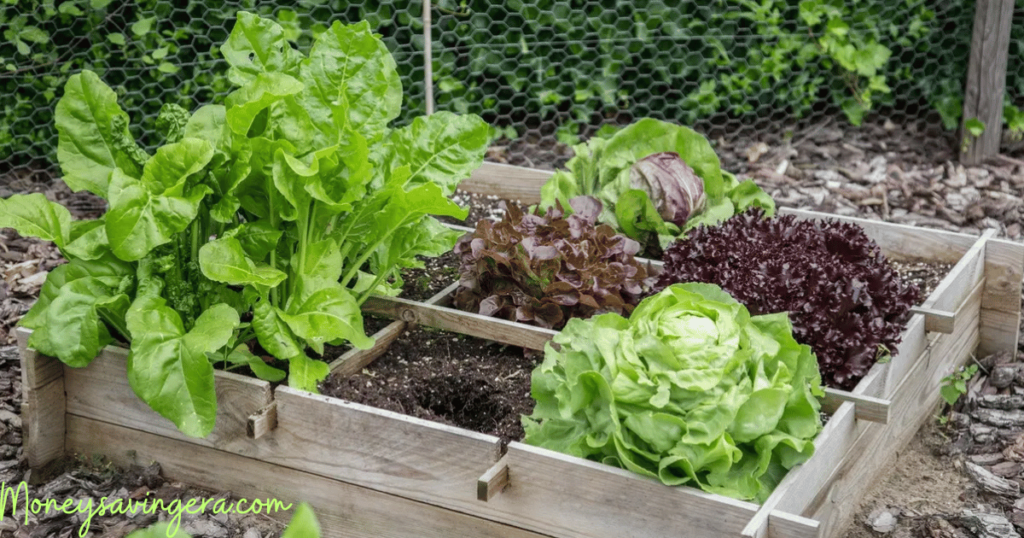
Secondly, Electro Culture Gardening aids in the activation of microbial activity in the soil. The electrical stimulation stimulates soil microbes, such as beneficial bacteria and fungi, which play crucial roles in nutrient cycling and soil fertility. This fosters a more vibrant and balanced soil ecosystem, promoting overall plant well-being.
Furthermore, Electro Culture Gardening has shown remarkable potential in increasing the resistance of plants to diseases, pests, and environmental stressors. The electrical current activates the plant’s own defense mechanisms, strengthening its immune system and enhancing its overall resilience to adverse conditions.
It is important to note that while Electro Culture Gardening offers numerous advantages, it is not intended to replace essential gardening practices such as proper watering, adequate sunlight, and appropriate soil nutrition. Rather, it should be considered as a complementary method to traditional gardening techniques, enhancing their effectiveness.
Fact: Studies have demonstrated that Electro Culture Gardening can significantly increase crop yields by up to 20% and decrease water usage by up to 50%, making it a highly sustainable and environmentally friendly option for agricultural production.
How Does Electro Culture Gardening Work?
Are you wondering how Electro Culture Gardening actually works? Let me give you a step-by-step guide:
- Soil Preparation: It’s important to start by properly preparing the soil for your Electro Culture Garden. Clear out any weeds or unwanted plants and make sure the soil is well-drained.
- Plant Selection: Choose the plants you want to grow in your garden. Electro Culture Gardening works well for a wide variety of plants, including vegetables, fruits, and flowers.
- Electrode Placement: Place the electrodes evenly throughout the garden bed, as they will act as conduits for the electrical energy.
- Power Connection: Connect the electrodes to a low-voltage power source, such as a battery or solar panel. This power source will supply a gentle current of electricity to the soil.
- Watch the Plants Grow: As the current flows through the soil, it interacts with the plant’s roots, stimulating growth and nutrient absorption. This results in healthier and more robust plants.
- Garden Monitoring: Keep an eye on the progress of your Electro Culture Garden. Observe how the plants are growing, their overall health, and well-being. Adjust the electrical current if needed.
- Maintenance is Key: Just like traditional gardening methods, Electro Culture Gardening requires regular watering, weeding, and fertilization. Make sure to provide the necessary care and attention to your plants.
Now you know the process of how Electro Culture Gardening works! Give it a try and see the amazing results for yourself.
What are the Traditional Gardening Methods?
Curious about the various techniques used in traditional gardening? In this section, we’ll take a closer look at soil-based gardening, hydroponic gardening, and organic gardening.
From getting your hands dirty in the soil to experimenting with nutrient-rich water systems or embracing natural methods, we’ll uncover the diverse methods employed by avid gardeners. So, whether you’re a seasoned horticulturist or just starting out, prepare to discover the secrets behind traditional gardening approaches that have stood the test of time.
Soil-Based Gardening
Soil-Based Gardening is a traditional gardening method that involves growing plants directly in the soil. Here are some key points to consider about soil-based gardening:
- Rich nutrient content: Soil-based gardening allows plants to access a wide range of natural nutrients present in the soil. The organic matter in the soil provides essential minerals and micronutrients that promote plant growth and overall health.
- Effective water retention: Soil has the ability to retain water and provide a steady supply to plant roots. It helps in preventing water stress and ensures proper hydration for plants.
- Natural soil structure: The soil structure in soil-based gardening provides a stable foundation for plants to grow and anchor their roots. It allows for better penetration and circulation of air, water, and nutrients, supporting healthy root development.
- Microbial activity: The soil is teeming with beneficial microorganisms that help break down organic matter and enhance nutrient availability to plants. These microorganisms form a symbiotic relationship with plants and contribute to their overall growth and vigor.
- Cost-effective: Soil-based gardening is generally more affordable as it does not require expensive equipment or specialized systems like hydroponics. It utilizes natural resources in the form of soil and compost, making it accessible to a wider range of gardeners.
- Diversity of plant species: The diversity of plant species that can be grown in soil-based gardening is vast. Different plants have unique soil requirements, and soil-based gardening allows for a variety of plants to thrive according to their specific needs.
The advantages of soil-based gardening are evident in the healthy growth and abundant yield of plants, thanks to the natural nutrient availability and optimal water retention. However, it is important to consider the soil quality and pH level for specific plant requirements. Testing the soil and amending it with organic matter or fertilizers can help create an ideal growing environment for plants in soil-based gardening.
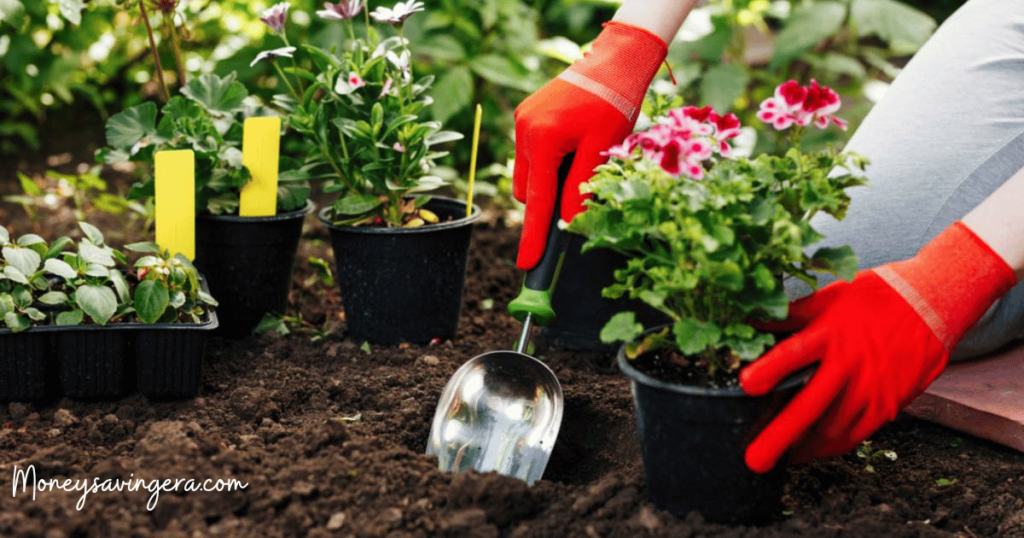
Soil-based gardening, with its natural and holistic approach, remains a popular choice among gardeners for its simplicity, affordability, and ability to foster a thriving ecosystem. By understanding and nurturing the soil, gardeners can cultivate a wide range of plants and enjoy the beauty and rewards of a successful garden.
Hydroponic Gardening
Hydroponic gardening is a method of growing plants without soil. Instead, plants are grown in a nutrient-rich water solution, allowing them to absorb nutrients directly through their roots. Here are some key points to consider about hydroponic gardening:
- Efficient use of water: Hydroponic gardening uses approximately 90% less water compared to traditional soil-based gardening. This is because the water in hydroponic systems is recirculated, reducing evaporation and water waste.
- Precise nutrient control: In hydroponic gardening, the nutrient solution can be carefully balanced to provide plants with the exact amount of nutrients they need. This allows for optimal growth and prevents nutrient deficiencies or excesses.
- Faster growth rates: Without the need to search for nutrients in the soil, plants in hydroponic systems can grow faster and produce higher yields. This is because they can focus their energy on growth rather than root development.
- Space-saving: Hydroponic systems can be set up vertically, allowing for efficient use of space in small areas. This makes hydroponic gardening ideal for urban environments or limited gardening spaces.
- Pest and disease management: The absence of soil in hydroponic systems helps reduce the risk of pests and diseases that are commonly associated with traditional gardening methods. This can lead to healthier plants and less reliance on pesticides.
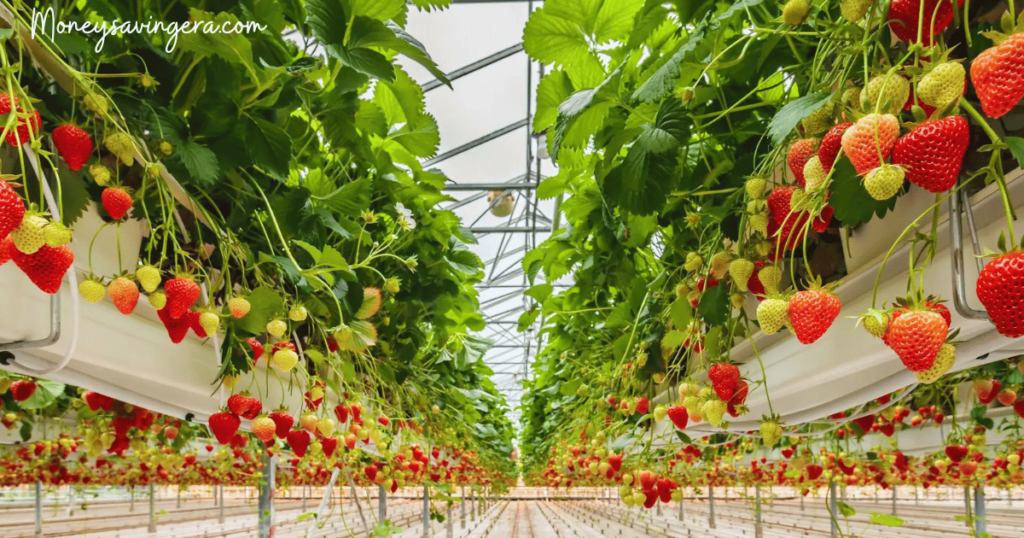
A true story that showcases the benefits of hydroponic gardening is that of a small-scale farmer who used hydroponics to grow lettuce in an urban area. With limited space and a desire for fresh, pesticide-free produce, this farmer set up a hydroponic system in a small greenhouse. The controlled environment allowed for year-round production and the ability to grow a large number of lettuces in a relatively small space.
The farmer found that the lettuce grew faster and had a more consistent quality compared to traditional soil-based methods. The precise nutrient control helped to achieve optimal growth and the absence of soil reduced the risk of pests and diseases. This farmer was able to supply local restaurants and farmers markets with fresh, hydroponically grown lettuce, making a profitable business out of their urban garden.
Organic Gardening
The table below compares organic gardening with other traditional gardening methods:
| Gardening Method | Definition | Exposure to Chemicals | Environmental Impact | Pest and Disease Management |
|---|---|---|---|---|
| Organic Gardening | A gardening method that focuses on growing plants without the use of synthetic fertilizers, pesticides, or genetically modified organisms. | Avoids the use of chemical pesticides and synthetic fertilizers, reducing exposure to harmful chemicals. | Minimizes harm to the environment by promoting soil health and biodiversity. | Relies on natural pest control methods, such as biological controls and companion planting. |
| Soil-Based Gardening | A traditional gardening method that involves growing plants in soil. | May use chemical pesticides and synthetic fertilizers, depending on individual practices. | May contribute to soil degradation and water pollution if chemical inputs are overused. | Chemical pesticides are commonly used to manage pests and diseases. |
| Hydroponic Gardening | A method of gardening that grows plants in a soilless medium, with their roots submerged in water. | Relies on nutrient solutions, which can contain synthetic chemicals unless organic alternatives are used. | Requires significant energy inputs for lighting, pumps, and nutrient delivery systems. | Relies on preventive measures and biological controls to manage pests and diseases. |
From the above comparison, it is clear that organic gardening stands out in several aspects. It eliminates the use of synthetic chemicals, reducing the exposure to potentially harmful substances for both gardeners and consumers. Organic gardening also has a positive impact on the environment, promoting soil health and biodiversity while minimizing water and soil pollution.

In terms of pest and disease management, organic gardening relies on natural methods such as beneficial insects and companion planting. This reduces the need for chemical pesticides and fosters a balanced ecosystem.
Comparison between Electro Culture Gardening and Traditional Gardening Methods
Get ready to delve into a fascinating comparison between Electro Culture Gardening and Traditional Gardening Methods. We’ll explore the different aspects like water and nutrient requirements, growth and yield, environmental impact, and pest and disease management.
From understanding how each method impacts plant growth to examining their environmental implications, this section will provide valuable insights into the contrasting approaches of these gardening techniques. So, let’s dig in and uncover the pros and cons of Electro Culture Gardening versus Traditional Methods!
Water and Nutrient Requirements
To compare the water and nutrient requirements of Electro Culture Gardening and Traditional Gardening Methods, let’s take a look at the table below:
| Gardening Method | Water Requirements | Nutrient Requirements |
| Electro Culture Gardening | Varies based on plant species, climate, and soil moisture | Minimal nutrient requirements, as plants obtain nutrients directly from the soil |
| Soil-Based Gardening | Varies based on plant species, climate, and soil moisture | Needs regular soil fertilization to provide necessary nutrients |
| Hydroponic Gardening | Requires a constant flow of water to maintain nutrient levels | Requires nutrient solutions to be added to the water for plant growth |
| Organic Gardening | Varies based on plant species, climate, and soil moisture | Relies on organic fertilizers and compost to provide nutrients |
In Electro Culture Gardening, plants primarily absorb water from the soil. They rely on the natural moisture in the soil and waterings adjusted according to climatic conditions. Electro Culture Gardening promotes healthy soil biology, which assists in water retention and nutrient availability for plants.
Traditional gardening methods like Soil-Based Gardening, Hydroponic Gardening, and Organic Gardening have varying water requirements. Soil-Based Gardening relies on natural soil moisture but may require additional watering during dry periods. Hydroponic Gardening, on the other hand, involves a constant flow of water to maintain nutrient levels. Organic Gardening, similar to Soil-Based Gardening, requires water based on plant species and climate.
Regarding nutrient requirements, Electro Culture Gardening has minimal nutrient needs. As the plants directly obtain nutrients from the soil, there is no requirement for additional fertilization. However, in Traditional Gardening Methods, regular soil fertilization, nutrient solutions in hydroponics, and organic fertilizers in organic gardening are necessary to ensure plants receive essential nutrients for growth.
One gardener, Sarah, decided to switch to Electro Culture Gardening due to its low maintenance. She noticed that her water bills decreased significantly compared to when she practiced Hydroponic Gardening. With Electro Culture Gardening, Sarah observed that the plants thrived with minimal nutrient requirements, as they were provided with a healthy soil ecosystem. This experience motivated Sarah to explore more sustainable and water-efficient gardening methods, benefiting not only her plants but also her wallet and the environment.
Growth and Yield
The growth and yield of plants in Electro Culture Gardening and traditional gardening methods can vary significantly. Here is a comparison of growth and yield between the two methods:
| Aspect | Electro Culture Gardening | Traditional Gardening Methods |
| Growth Rate | Electro Culture Gardening promotes accelerated growth rates in plants. The use of electromagnetic fields enhances the plant’s metabolism, leading to faster growth. | In traditional gardening methods, the growth rates may vary depending on factors such as soil quality, nutrients, and environmental conditions. The growth is generally steady but can be slower compared to electro culture gardening. |
| Yield Quantity | Electro Culture Gardening has been shown to significantly increase the yield quantity of crops. The electromagnetic fields stimulate plant growth and enhance nutrient absorption, resulting in higher crop yields. | In traditional gardening methods, the yield quantity can vary depending on various factors such as plant variety, soil fertility, and proper care. While traditional methods can also achieve high yields, they may not match the potential of electro culture gardening. |
| Yield Quality | Electro Culture Gardening can enhance the quality of the yield. The electromagnetic fields promote the synthesis of essential compounds in plants, leading to improved taste, texture, and nutritional value of the harvested produce. | In traditional gardening methods, the yield quality depends on factors such as soil health, nutrient availability, and plant care practices. Although traditional methods can produce high-quality yields, electro culture gardening may offer additional benefits in this aspect. |
| Consistency | Electro Culture Gardening provides consistent and predictable growth and yield patterns. The controlled electromagnetic environment ensures optimal conditions for plant development, resulting in consistent results. | In traditional gardening methods, the consistency of growth and yield can be influenced by various factors such as weather changes, pests, diseases, and human intervention. Achieving consistent results may require careful monitoring and adjustments. |
| Environmental Adaptability | Electro Culture Gardening can be beneficial for plants that require specific environmental conditions. The electromagnetic fields can help create an ideal environment, allowing plants to thrive even in challenging climates or non-optimal soils. | Traditional gardening methods can be adaptable to different environmental conditions, but certain plants may struggle in extreme climates or unsuitable soil conditions. Careful selection of plant varieties and appropriate techniques can improve adaptability. |
It is important to note that the growth and yield in both methods can also be influenced by factors such as proper plant care, nutrient management, and pest control. Each gardening method has its advantages and considerations when it comes to achieving optimal growth and yield.
Environmental Impact
The environmental impact of different gardening methods should be carefully considered when choosing the most suitable approach. Here are some factors to consider:
- Resource consumption: Traditional gardening methods often require significant amounts of water for irrigation, especially in soil-based gardening. Electro culture gardening, on the other hand, utilizes a technique called electrolysis, which can reduce water consumption by up to 70%.
- Energy usage: Traditional gardening methods such as hydroponics and organic gardening may require artificial lighting or heating systems, resulting in higher energy consumption. Electro culture gardening, on the other hand, relies on natural sunlight and does not require additional energy for lighting.
- Chemical usage: Traditional gardening methods may rely on synthetic fertilizers and pesticides, which can have adverse effects on soil and water quality. Electro culture gardening eliminates the need for synthetic chemicals, promoting a more sustainable and eco-friendly approach.
- Soil health: Traditional gardening methods can deplete the soil of essential nutrients over time, leading to erosion and degradation. Electro culture gardening focuses on soil regeneration and enhancement, promoting long-term soil health and productivity.
- Biodiversity preservation: Traditional gardening methods may disrupt natural ecosystems and contribute to the loss of biodiversity. Electro culture gardening emphasizes working in harmony with nature, preserving biodiversity by creating a habitat for beneficial insects and promoting ecological balance.
Considering the environmental impact of gardening methods is crucial for sustainable and responsible cultivation. Electro culture gardening offers several advantages in terms of resource efficiency, reduced chemical usage, and soil regeneration, making it a viable option for environmentally conscious gardeners.
Pest and Disease Management
When it comes to pest and disease management, Electro Culture Gardening and traditional gardening methods have different approaches. Here are some key points to consider:
- Prevention: Electro Culture Gardening focuses on prevention by utilizing the natural electromagnetic field to create a healthier and more resilient plant environment. This can help reduce the susceptibility to pests and diseases.
- Biological control: Traditional gardening methods often rely on biological control methods, such as introducing beneficial insects or using natural predators to manage pests. This can help maintain a balance in the garden ecosystem and reduce the need for chemical interventions.
- Integrated Pest Management (IPM): Both Electro Culture Gardening and traditional methods can benefit from implementing IPM practices. This includes regularly monitoring the garden for pests and diseases, identifying specific problems, and choosing the most appropriate and least harmful control methods.
- Chemical interventions: While traditional gardening methods may sometimes rely on chemical pesticides and fungicides, Electro Culture Gardening aims to minimize the use of synthetic chemicals. Instead, it focuses on creating a healthy and strong plant immune system through electromagnetic stimulation.
- Cultural practices: Traditional gardening methods often emphasize cultural practices, such as proper hygiene, crop rotation, and removing plant debris, to prevent the spread of diseases. Electro Culture Gardening also encourages good cultural practices but enhances them with its electromagnetic techniques.
Interesting Fact: Did you know that some studies have shown that plants grown using Electro Culture Gardening techniques have reduced pest and disease problems, leading to higher crop yields and improved overall plant health? This highlights the potential benefits of this innovative gardening method in pest and disease management.
Benefits and Drawbacks of Electro Culture Gardening
Discover the enticing world of Electro Culture Gardening! Uncover the remarkable benefits and potential drawbacks that come with this innovative approach to nurturing your plants. From amplified growth rates to increased nutrient absorption, the benefits of Electro Culture Gardening are nothing short of intriguing.
On the flip side, it’s important to explore the potential drawbacks that may arise when implementing this unconventional gardening method. Get ready to dive into the captivating realm of Electro Culture Gardening and explore its fascinating pros and cons.
Benefits of Electro Culture Gardening
When it comes to gardening, the benefits of electro culture gardening are numerous and can greatly enhance the productivity and sustainability of your gardening practices.
- One of the key advantages of electro culture gardening is enhanced nutrient uptake. This method improves the absorption of nutrients by plants, allowing them to access a greater range and quantity of essential elements. As a result, it boosts their overall growth and development, leading to healthier and more productive plants.
- Another significant benefit of electro culture gardening is increased water efficiency. By facilitating the movement of water through the soil and roots, this technique helps plants utilize water more effectively. This reduces water waste and ensures that plants receive optimal hydration, even in dry or arid conditions.
- Moreover, electro culture gardening improves plant health by stimulating plant metabolism and strengthening their immune systems. This leads to improved disease resistance, reduced susceptibility to pests, and overall healthier plants.
- In addition, electro culture gardening can accelerate the process of seed germination, enabling faster and more uniform growth. This benefit is particularly advantageous for time-sensitive crops or in regions with shorter growing seasons.
- Finally, electro culture gardening has a reduced environmental impact. By minimizing the need for synthetic fertilizers and pesticides, it promotes more sustainable and eco-friendly gardening practices. By relying on natural processes and optimizing plant health, it contributes to the preservation of soil quality and overall ecosystem biodiversity.
Overall, electro culture gardening offers a range of benefits that can greatly enhance your gardening experience and contribute to a more sustainable approach.
Drawbacks of Electro Culture Gardening
Electro Culture Gardening is an emerging gardening technique that offers several benefits. However, it also has its drawbacks that should be considered before adopting this method. Here are the drawbacks of Electro Culture Gardening:
- Limited plant diversity: Electro Culture Gardening is still a new technique, and not all plants are suitable for this method. Some plants may not respond well to the electric stimulation, limiting the variety of plants that can be grown.
- High setup cost: Implementing Electro Culture Gardening requires specific equipment and materials, such as electrodes, power source, and control systems. These components can be expensive, making the initial setup cost higher than traditional gardening methods.
- Complexity: Electro Culture Gardening involves understanding electrical principles and techniques. It requires knowledge and expertise to set up and maintain the electrical systems properly. This complexity may deter beginners or those who prefer simpler gardening methods.
- Energy consumption: Electro Culture Gardening relies on electrical stimulation to enhance plant growth. This means that it consumes electricity, which can lead to increased energy usage compared to traditional gardening methods. It may not be an environmentally friendly option for those looking to minimize their carbon footprint.
- Dependency on electricity: As Electro Culture Gardening heavily relies on electricity, any power interruptions or failures can disrupt the growth process. This dependence on electricity may pose challenges in areas with unreliable power supply or during natural disasters.
- Lack of long-term research: Electro Culture Gardening is still a relatively new concept, and there is limited long-term research on its effects on plants and ecosystems. Without extensive studies, it is challenging to fully understand the potential consequences and long-term impacts of using electrical stimulation for plant growth.
Considering these drawbacks, it is essential to weigh the advantages and disadvantages of Electro Culture Gardening before deciding to adopt this method. While it offers innovation and potential benefits, it may not be suitable for all gardeners depending on their preferences, resources, and gardening goals.
Advantages and Disadvantages of Traditional Gardening Methods
Traditional gardening methods have been passed down through generations, offering unique advantages and drawbacks. In this section, we’ll uncover the perks and disadvantages of using these age-old gardening techniques.
From fostering a sense of connection to the earth to potentially limiting biodiversity, we’ll explore the different aspects that make traditional gardening methods both beneficial and challenging. So, let’s dig deep into the pros and cons of these time-honored practices.
Advantages of Traditional Gardening Methods
The advantages of traditional gardening methods include:
- Cost-effectiveness: Traditional gardening methods, such as soil-based gardening, are often more affordable compared to other methods like hydroponics. Soil, seeds, and basic gardening tools are readily available and relatively inexpensive.
- Nutrient-rich plants: Soil-based gardening allows plants to absorb nutrients directly from the soil, resulting in healthier and more nutritious crops. The natural composition of soil provides essential minerals and trace elements needed for plant growth.
- Environmental friendliness: Traditional gardening methods are typically more environmentally friendly compared to methods like hydroponics, which require the use of artificial fertilizers and growing media. Soil-based gardening promotes biodiversity, soil health, and natural pest control.
- Adaptability: Traditional gardening methods can be adapted to different regions and climates. By choosing appropriate plant varieties and implementing techniques like crop rotation and companion planting, gardeners can optimize plant growth and adapt to local growing conditions.
- Connection to nature: Traditional gardening methods provide an opportunity for individuals to connect with nature and engage in outdoor activities. Working in the soil, tending to plants, and observing the growth and development of crops can be a therapeutic and fulfilling experience.
Throughout history, traditional gardening methods have played a crucial role in providing communities with sustenance and contributing to food security. These methods have been passed down from generation to generation, preserving cultural knowledge and sustainable farming practices.
Traditional gardening methods have allowed communities to cultivate their own produce, reducing reliance on external food sources and promoting self-sufficiency. Today, traditional gardening methods continue to be valued for their numerous advantages, enabling individuals to grow their own food, support local ecosystems, and foster a deep connection with nature.
Disadvantages of Traditional Gardening Methods
Traditional gardening methods have several disadvantages:
- Limited space: These methods often require a significant amount of space, making it challenging for individuals with limited outdoor areas or those living in urban environments to engage in gardening.
- Dependence on soil quality: Soil-based gardening relies heavily on the quality of the soil, which can vary greatly depending on the location. Poor soil quality can result in decreased plant growth and yield.
- Higher water usage: When compared to other methods like hydroponic or organic gardening, traditional gardening methods generally require more water. This can be a disadvantage in regions with water scarcity or for individuals who aim to conserve water.
- Weed management: Frequent weeding is often necessary in traditional gardening to prevent unwanted plants from competing with cultivated plants for nutrients and resources.
- Pest and disease management: Traditional gardening methods are more susceptible to pest and disease issues because the soil can harbor pathogens and attract pests. This may require the use of pesticides and other chemical interventions.
- Seasonal limitations: Traditional gardening methods are constrained by seasonal changes and climate conditions, which can limit the availability of fresh produce throughout the year.
- Maintenance and labor: Maintaining a traditional garden demands regular care and maintenance, including tasks such as pruning, watering, and fertilizing. This can be time-consuming and labor-intensive.
- Environmental impact: Traditional gardening methods can have a higher environmental impact due to water and resource usage, as well as the potential use of synthetic fertilizers and pesticides.
It’s important to note that although traditional gardening methods have their disadvantages, they also have their advantages. Understanding these disadvantages can help individuals make informed choices when selecting the most suitable gardening method for their needs.
Fact: According to a study published in the Journal of Environmental Horticulture, traditional gardening methods account for the majority of home gardening practices worldwide.
Important Facts
- ✅ Electro culture gardening is a sustainable farming method that utilizes the Earth’s natural energy to enhance plant growth and increase crop yields. (Source: agtecher.com)
- ✅ This ancient technique dates back to the 18th century and has gained popularity among farmers due to its impressive results and environmentally friendly approach. (Source: agtecher.com)
- ✅ By using atmospheric antennas made of materials like wood, copper, zinc, and brass, electro culture farming can amplify yields, reduce irrigation, combat frost and excessive heat, reduce pests, and increase the magnetism of the soil. (Source: agtecher.com)
- ✅ Traditional gardening methods rely on pesticides, manure, and fertilizers, while electro culture gardening reduces the need for these chemicals, making it more environmentally friendly. (Source: agtecher.com)
- ✅ The exact mechanisms behind how electro culture gardening works are not fully understood, but it is believed that plants can sense electrical charges in the air and respond by increasing their metabolic rates and absorbing more water and nutrients. (Source: agtecher.com)

